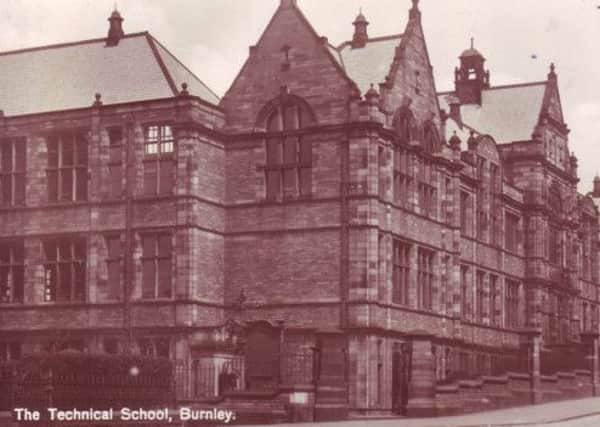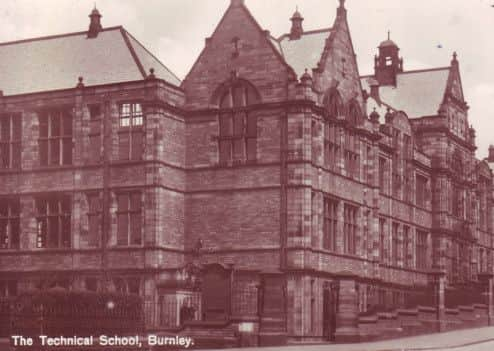20th Century changes


As a member of the Council, and Chairman of the Burnley Civic Trust, I know just how contentious an issue this is with many of our residents.
They will point to buildings, like the Victorian Market Hall, the Thorn Hotel, the fine shops on Market Street, and numerous other buildings, and say that these structures, and many others, should not have been pulled down.
Advertisement
Hide AdAdvertisement
Hide AdMy positions as both a councillor, and as a member of the Burnley Civic Trust, mean that I am criticised and praised almost in equal measure.


The Burnley Civic Trust is to celebrate its 50th Anniversary at a special meeting next month (Thursday, November 20th) at St Peter’s when I will be giving a talk which has been prepared by Neil Fawcett, and myself, on the history and impact of the Trust since it was inaugurated in 1964.
By the time the Burnley Civic Trust, which has been a pioneer in tree planting and recycling schemes in town, was started, Burnley had departed on a large scale modernisation scheme. A number of the town’s most beloved buildings were lost and, rightly, much of the blame has to go to the Council of the day. That said, although the leading members were in agreement about what needed to be done to get Burnley into the 20th Century, many of the ideas implemented actually came from officers of the Council, some of whom, it must be said, had little regard for the best of the buildings of the past.
Even in my time we have lost Bank Hall. The people to blame here are the Health Service who, under their guardianship, the building was left to rot. They also wanted to maximise their income from the site, when it was sold, to make the Home for the Elderly that we know today.
Advertisement
Hide AdAdvertisement
Hide AdAt the time, I wanted an archaeological dig to take place on the site of the Hall, though I would have preferred to find an alternative use for the building. I did so because Bank Hall was one of the oldest continually occupied sites in Burnley. The building that we knew was late 18th Century but, before that, there had been a timber house on the site which looked like a smaller version of Speke Hall, near Liverpool.
My suggestion got no support with the planners who co-operated in the destruction of the building. A historic 18th Century structure, that was high in the affections of many local people, because it had been the town’s maternity hospital for as long as anyone could remember, was lost and replaced by another bland modern building. However, I would concede that the present structure provides a vital service.
Mention of the blandness of modern buildings is something that we hear of often, too often, these days.
Two more of them were mentioned at a recent Civic Trust meeting – the proposed new Banny’s Fish and Chip Café in the Weavers’ Triangle and a proposal to build a retail store on the site of the former Whittaker and Clegg’s builder’s yard on Hammerton Street.
Advertisement
Hide AdAdvertisement
Hide AdBoth of these designs are as bland as might be feared and buildings like them are giving our town the semblance of an American retail park. Where are the good modern buildings? Few of the most recent can be found in Burnley.
That, though, was not always the case. Some of the images I present to you today demonstrate that, in the 20th Century at least, some good buildings were built in Burnley. Others I could have mentioned, but have not included today, would be the Prestige building on Colne Road, Empire Buildings, the shops opposite the former Empire theatre on St James’s Street and Padiham Town Hall. There are, of course, others but I find little to love in the St Peter’s Leisure Centre, the present bus station and almost all of Charter Walk, including the present Market Hall.
With reference to the latter two, I found myself on the Council Working Groups which overlooked the later stages of the planning of these buildings. Would you believe me if I told you that the Groups managed to make improvements, mostly minor, to these structures before they were built? In addition, it fell to me, when in office as Mayor, to open the St Peter’s Leisure Centre, an event which I enjoyed though I advocated that we should have hired the services of a notable local sportsman or sportswoman.
The images I have chosen for today’s Retro all come from the Briercliffe Society’s Postcard Collection. I have been limited to the buildings that are shown there but, at some stage, I will write about buildings on images that are held in the Society’s Photograph Collection.
Advertisement
Hide AdAdvertisement
Hide AdI have tried to cover the whole of the 20th Century rather than merely the changes since 1964.
You will notice that the early buildings had much in common with the structures of the Victorian era but, as the 20th Century progressed, the materials used by architects changed and accountants seem to have taken over.